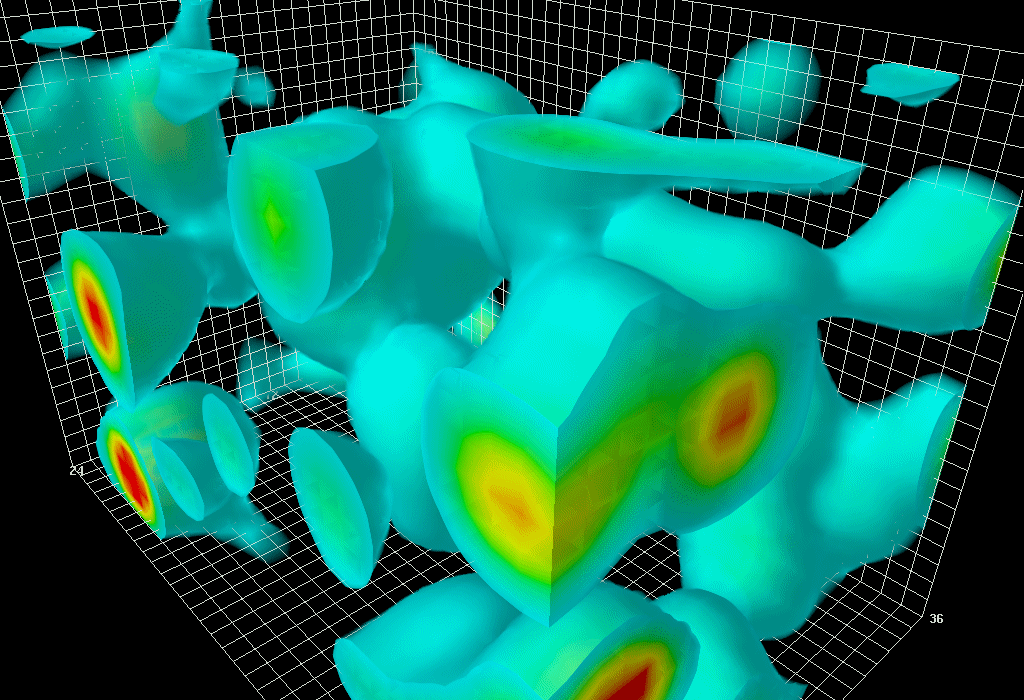Physics is the heartbeat of the universe — the invisible rhythm that governs everything from the tiniest particle to the largest galaxy. It is not just a science of numbers or formulas; it is the poetry of existence written in the language of motion, energy, and time. Every discovery in physics has reshaped how humanity understands reality itself.
Through centuries of observation, curiosity, and genius, humans have peeled back the layers of the cosmos. Each revelation — from the fall of an apple to the bending of starlight — has changed not just science, but philosophy, technology, and even our sense of identity.
Here are ten of the most important discoveries in physics — discoveries that transformed our understanding of nature, challenged everything we believed, and opened doors to the mysteries still waiting to be explored.
1. Newton’s Laws of Motion – The Foundation of Classical Physics
In the 17th century, the world was on the edge of scientific awakening. Then came Isaac Newton, a young English mathematician who turned curiosity into cosmic law. Sitting under a tree, legend says, an apple fell — not just onto the ground, but into history.
From that simple moment of inspiration came one of humanity’s greatest intellectual achievements: Newton’s Laws of Motion.
These three laws — governing inertia, force, and action-reaction — form the backbone of classical mechanics. They explain how every object moves, from a thrown stone to the planets orbiting the Sun. Newton unified heaven and Earth under one set of principles.
He showed that the same gravity that pulls an apple downward keeps the Moon in orbit. His Principia Mathematica, published in 1687, laid the groundwork for centuries of scientific and technological progress.
Everything from bridges to rockets, from cars to computers, relies on Newton’s understanding of motion and force. His discoveries gave humanity the first true language of physics — a way to describe the universe in precise mathematical terms.
Newton didn’t just give us equations; he gave us the ability to predict, to engineer, to dream. His laws marked the beginning of modern science itself.
2. The Discovery of Electromagnetism – The Invisible Web of Energy
Electricity and magnetism were once thought to be separate mysteries. Sparks from lightning seemed unrelated to the pull of a magnet. But in the 19th century, brilliant minds like Michael Faraday and James Clerk Maxwell revealed that they were two faces of the same force: electromagnetism.
Faraday, a self-taught English scientist, discovered that a changing magnetic field could induce an electric current. This principle became the foundation of electric generators and transformers — technologies that power our entire civilization.
Then came James Clerk Maxwell, the Scottish physicist who united all of electromagnetism in four elegant equations. His work showed that light itself is an electromagnetic wave — an intertwining of electric and magnetic fields moving through space.
This revelation transformed our understanding of light, energy, and communication. Without it, there would be no electricity grids, no radio, no television, no Wi-Fi — nothing that defines our modern world.
Electromagnetism revealed an invisible web of energy connecting everything. It was as if the universe, once still and silent, suddenly began to hum with power.
3. The Discovery of the Electron – The First Step into the Quantum World
In 1897, J. J. Thomson made a discovery that shattered the idea of indivisible atoms. Using a cathode ray tube, he found that atoms contained tiny, negatively charged particles — electrons.
This was the first glimpse into the subatomic world. Matter was no longer solid and indivisible; it was a structured dance of invisible particles. Thomson’s discovery was revolutionary. It opened the door to understanding the atom’s inner life and laid the foundation for modern electronics.
Without the discovery of the electron, there would be no computers, smartphones, or the entire digital world. The microchip — the beating heart of technology — exists because of that breakthrough.
But beyond its technological importance, the electron changed how scientists viewed matter itself. It showed that even the smallest pieces of reality were active, dynamic, and alive with movement.
The discovery of the electron was not just the beginning of modern physics — it was the birth of the quantum age.
4. Einstein’s Theory of Relativity – The Revolution of Space and Time
Few discoveries have shaken human thought as profoundly as Albert Einstein’s Theory of Relativity. Published in two parts — the Special Theory in 1905 and the General Theory in 1915 — it redefined reality itself.
Special Relativity revealed that space and time are not separate entities but part of a single fabric: spacetime. It showed that time can slow down or speed up depending on how fast you move. It proved that energy and mass are equivalent — captured in the legendary equation E = mc².
Then, Einstein went further. With General Relativity, he showed that gravity is not a mysterious force pulling objects together. Instead, it is the curvature of spacetime caused by mass. Massive bodies like stars and planets bend the space around them, and that curvature tells objects how to move.
When starlight was observed bending around the Sun during a solar eclipse in 1919, Einstein’s theory was confirmed — and the universe would never look the same again.
Relativity not only changed physics; it changed philosophy. It showed that reality depends on perspective, that time and space are intertwined, and that the universe is far stranger than common sense suggests.
It also gave us GPS technology, nuclear energy, and the modern understanding of cosmology. Einstein’s theory is the ultimate symphony of mind and mathematics — a vision of the universe both elegant and profound.
5. Quantum Mechanics – The Strange Laws of the Microscopic World
If relativity revealed the vastness of the universe, quantum mechanics unveiled its smallest secrets — and with them, a world stranger than anyone could imagine.
At the turn of the 20th century, scientists were puzzled by phenomena that classical physics couldn’t explain — like how light behaves both as a particle and a wave, or how atoms emit light in specific colors.
Then came Max Planck, Niels Bohr, Werner Heisenberg, and Erwin Schrödinger — pioneers who built a new theory of nature. Quantum mechanics showed that particles exist in states of probability rather than certainty. They can be in multiple places at once until observed.
Heisenberg’s Uncertainty Principle revealed that the more precisely you know one property (like position), the less precisely you can know another (like momentum). Schrödinger introduced the famous thought experiment of a cat that is both alive and dead — a metaphor for quantum superposition.
This was not just science; it was a philosophical earthquake. Quantum mechanics defied logic, challenged determinism, and forced humanity to rethink the nature of reality.
Yet, despite its strangeness, quantum mechanics works — spectacularly. It explains the behavior of atoms, electrons, and light. It powers lasers, semiconductors, and MRI machines. It gave birth to quantum computing, a technology poised to revolutionize the future.
The quantum world is a mirror — reflecting how limited human intuition can be, and how boundless nature truly is.
6. The Discovery of Radioactivity – The Hidden Power of the Atom
In 1896, French physicist Henri Becquerel made a surprising discovery: certain materials emitted invisible rays that could expose photographic plates, even in the dark. Soon after, Marie and Pierre Curie identified the elements polonium and radium, unlocking the mystery of radioactivity.
This invisible power came from within the atom itself — the spontaneous decay of unstable nuclei releasing energy.
The discovery of radioactivity transformed science and medicine. It revealed that atoms are not eternal, but dynamic. It led to the understanding of nuclear fission and fusion — the reactions that power both stars and nuclear reactors.
Marie Curie, the first person to win two Nobel Prizes, revolutionized physics and chemistry. Her work led to medical applications like X-rays and cancer treatments.
Yet, radioactivity also brought danger. It gave rise to nuclear weapons, forever altering global history. It became a symbol of both human genius and moral responsibility — the double-edged sword of scientific discovery.
7. The Big Bang Theory – The Birth of the Universe
Where did everything come from? For centuries, that question belonged to philosophers and theologians. But in the 20th century, physics offered an answer: the universe had a beginning.
The Big Bang Theory emerged from the work of Georges Lemaître, Edwin Hubble, and others. Hubble’s observations in the 1920s showed that galaxies were moving away from each other — the universe was expanding.
If the universe is expanding now, it must have once been smaller — unimaginably smaller. Tracing this expansion backward led to the concept of a single, dense point: the origin of everything.
Then came evidence — the discovery of cosmic microwave background radiation by Arno Penzias and Robert Wilson in 1965 — the faint afterglow of the Big Bang itself.
The theory explained not only the expansion of the cosmos but also the formation of elements, galaxies, and stars.
The Big Bang Theory gave humanity its origin story — a tale not of myth, but of physics. It tells us that everything — every atom, every life, every star — began in a single moment of creation 13.8 billion years ago.
It’s the ultimate expression of curiosity: our desire to understand where we come from, and where we are going.
8. The Discovery of the Higgs Boson – The Missing Piece of the Universe
For decades, physicists searched for a missing key in the puzzle of the universe — a particle that gives mass to matter. The theory predicted it, but no one had ever seen it.
In 2012, at CERN’s Large Hadron Collider, scientists finally confirmed its existence: the Higgs boson.
This elusive particle, first proposed by Peter Higgs in the 1960s, interacts with other particles through the Higgs field, giving them mass. Without it, the universe would be a void of massless energy — no stars, no planets, no people.
The discovery of the Higgs boson completed the Standard Model of particle physics — the framework describing all known fundamental particles and forces (except gravity).
It was a triumph of human ingenuity — a discovery requiring thousands of scientists, decades of effort, and the most complex machine ever built.
The Higgs boson didn’t just confirm theory; it proved that our universe is understandable, that even its deepest mysteries can yield to human curiosity and cooperation.
9. The Discovery of Gravitational Waves – Listening to the Universe
For over a century, gravitational waves existed only as an elegant prediction in Einstein’s equations. He believed massive objects in motion — like merging black holes — could send ripples through spacetime itself.
Then, in 2015, the Laser Interferometer Gravitational-Wave Observatory (LIGO) detected them for the first time. Two black holes had collided over a billion years ago, and their echoes reached Earth as faint vibrations.
This was more than a confirmation of Einstein’s theory. It was the birth of a new kind of astronomy — one that listens instead of looks.
Gravitational waves let scientists “hear” cosmic events invisible to telescopes: black hole mergers, neutron star collisions, and the echoes of the early universe.
This discovery opened a new sensory channel into the cosmos, revealing a universe alive with movement and sound. It was as if, after centuries of watching the stars, humanity finally heard the universe whisper back.
10. Quantum Entanglement – The Mysterious Link Beyond Space
Einstein once called it “spooky action at a distance.” Quantum entanglement is the phenomenon where two particles become connected so deeply that the state of one instantly affects the other — even if they are light-years apart.
This strange discovery defies classical logic. It suggests that the universe is fundamentally interconnected, that information can transcend space and time.
First observed in experiments by physicists like Alain Aspect in the 1980s, entanglement is now one of the pillars of quantum physics. It’s also the foundation for cutting-edge technologies like quantum computing and quantum teleportation.
Entanglement challenges our understanding of separateness. It whispers of a universe more unified than we can comprehend — where distance is illusion, and everything is part of a greater whole.
The Endless Journey of Discovery
Each of these discoveries reshaped our world — not just technologically, but philosophically. They reveal a universe that is elegant, strange, and alive with possibility.
Physics is not finished. It is a living story, still unfolding. Questions remain — about dark matter, dark energy, the nature of time, and the ultimate fate of the cosmos.
But one truth endures: curiosity drives progress. From Newton’s falling apple to the Higgs boson’s fleeting existence, physics reminds us that the universe is knowable, and that knowledge is our greatest adventure.
To study physics is to fall in love with reality itself — to see the hidden beauty in motion, light, and gravity. It is to understand that, in discovering the laws of nature, we are also discovering ourselves.






